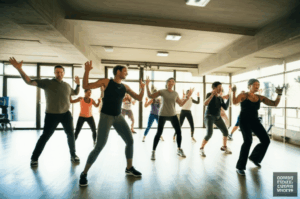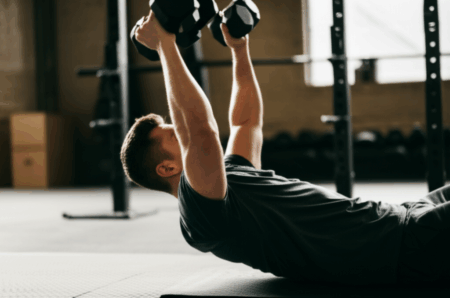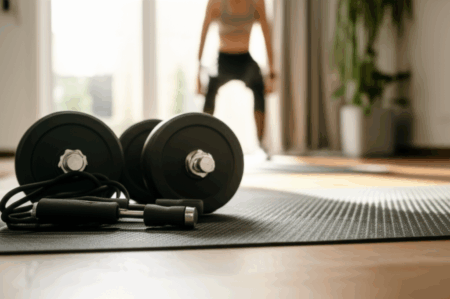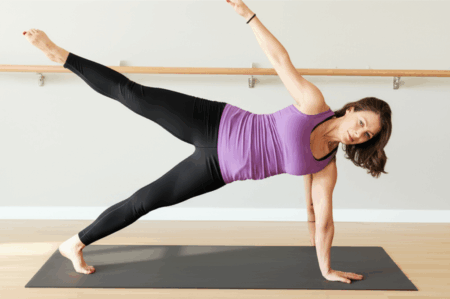Walking is a fantastic form of exercise, accessible to most people and offering numerous health benefits. Whether you’re aiming to improve your fitness, lose weight, or simply enjoy the outdoors more, boosting your walking speed and endurance can help you achieve your goals. This guide outlines four key types of workouts you should incorporate into your routine to walk faster, farther, and longer.
1. Cardio Workouts: Building Your Endurance Engine
Cardio workouts are the foundation for increasing your walking distance and stamina. They improve your cardiovascular health, allowing you to walk for longer periods without fatigue.
- Brisk Walking: Aim for at least 150 minutes of moderate-intensity aerobic activity per week. Brisk walking elevates your heart rate and breathing, challenging your cardiovascular system. Start with 30-minute sessions and gradually increase the duration as you get fitter. According to Healthline, a moderate-intensity pace is around 3 to 3.5 miles per hour (mph) for beginners, while more active individuals can aim for 3.5 to 4.5 mph.
- Interval Training: Incorporate short bursts of faster walking into your regular walks. For example, walk at a comfortable pace for 5 minutes, then increase your speed for 1-2 minutes, followed by another 5 minutes of comfortable walking. Repeat this cycle throughout your workout. Interval training improves both your speed and endurance.
- Incline Walking: Walking uphill or on an incline increases the intensity of your workout, engaging more muscle groups and challenging your cardiovascular system. Find a hilly route or use a treadmill to add incline to your walks. You can also try incline interval walks, alternating between forward and backward walking on an incline for an extra challenge.
- Progression Walks: If you’re new to walking or getting back into a routine, start with progression walks. Walk for 5-10 minutes at a comfortable pace, noting how far you go. Next time, walk for the same amount of time but aim to cover more ground. Gradually increase the duration of your walks as they become easier.
2. Strength Training: Powering Your Stride
Strength training is crucial for walkers because it builds the muscles needed to propel you forward efficiently and helps prevent injuries. Focus on strengthening your lower body and core.
- Squats: Strengthen your glutes, hamstrings, and quadriceps with squats. Stand with your feet shoulder-width apart, and lower your body as if sitting back into a chair. Keep your back straight and chest up. Do 10-15 repetitions per set. You can modify squats by doing chair stand ups, or holding a weight in front of your chest for an increased challenge.
- Lunges: Lunges work your glutes, hamstrings, quads, and core. Take a big step forward and lower your body until both knees are bent at 90-degree angles. Keep your front knee over your ankle and your back knee pointing towards the floor. Do 10-15 reps on each side. Walking lunges are also a great option.
- Glute Bridges: Target your glutes, hamstrings, and lower back with glute bridges. Lie on your back with your knees bent and feet flat on the floor. Lift your hips off the ground, squeezing your glutes at the top. Hold for a moment, then slowly lower back down.
- Calf Raises: Strengthen your calf muscles by standing on a flat surface and lifting your heels off the floor to stand on your toes. Pause for a moment, then slowly return to the floor. You can do this exercise on one leg for an increased challenge.
- Core Exercises: A strong core is essential for good posture and stability while walking. Include exercises like planks, crunches, and seated oblique twists in your routine.
3. Flexibility Exercises: Enhancing Your Range of Motion
Flexibility exercises improve your range of motion, reduce muscle stiffness, and prevent injuries. Incorporate these stretches into your routine before and after your walks.
- Hamstring Stretch: Prop one foot up on a low bench or step. Keeping your chest high and hips square, bend forward from your hips until you feel a stretch in the back of your thigh. Hold for 20-30 seconds on each leg.
- Hip Flexor Stretch: Lunge forward with one leg, knee bent. Push your hips forward until you feel a stretch in the front of your back thigh near the groin. Keep your torso upright and your front knee behind your toes. Hold for 20-30 seconds on each leg.
- Calf Stretch: Stand facing a wall with your hands on it. Position one foot forward (knee bent) and the other leg back with the leg straight, toes pointing at the wall. Lean into the wall until you feel a stretch in the lower part of the back leg. Hold for 20-30 seconds on each leg.
- Shoulder Rolls: Lift your shoulders up toward your ears, then down and backwards in a circular motion. Repeat 5-10 times.
4. Balance Exercises: Improving Stability and Coordination
Balance exercises are important for maintaining stability and preventing falls, especially as you increase your walking speed and distance.
- Single Leg Stance: Stand on one leg for 30 seconds, three times on each foot. Use a counter or chair for support if needed. You can further challenge yourself by standing on a pillow.
- Heel-to-Toe Walk: Walk in a straight line, placing one foot in front of the other, touching your heel to your toes with each step. Continue for 20 steps.
- Sideways Walking: Stand with your feet together, knees slightly bent. Step sideways in a slow and controlled manner, moving one foot to the side first, then the other to join it.
- Standing Marches: Stand at a counter or table and perform marches, picking your knee up as high as possible while staying balanced.
- Tandem Walking: Walk with one foot directly in front of the other in a straight line, trying to have the heel of the front foot touch the toes of the back foot.
Additional Tips for Walking Faster and Farther
- Maintain Good Posture: Stand tall with your head up, shoulders back, and core engaged. Avoid slouching or leaning forward.
- Use Proper Arm Movement: Bend your arms at 90 degrees and swing them forward and back, not across your body.
- Focus on Foot Strike: Aim to strike the ground with your heel first, rolling through the midfoot to push off with your toes.
- Increase Arm Swing: Increase the range of motion in your arms by swinging them more vigorously from front to back.
- Take Shorter, Quicker Steps: Focus on taking smaller strides and increasing your cadence (steps per minute).
- Walk the Line: Try to make your feet land one in front of another, walking in a straight line.
- Squeeze Your Glutes: Engage your gluteal muscles with each step.
- Perfect Your Stride: Strike the ground with your heel and let your foot roll forward naturally. At the end of your stride, really push off with your toes to propel your body forward.
By incorporating these four types of workouts and following these tips, you can improve your walking speed, endurance, and overall fitness. Remember to start slowly and gradually increase the intensity and duration of your workouts as you get stronger. Happy walking.







